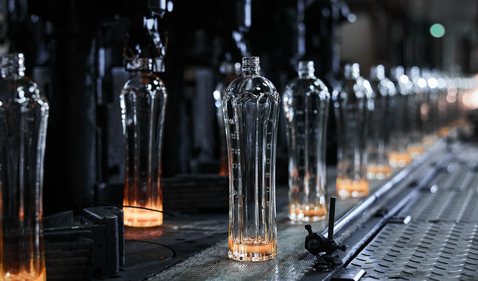
1. Recyclability
Glass wine bottle is a kind of material that can be recycled infinitely, and the recovered glass wine bottle can be melted back into the furnace again to make
new glass products, and the quality will not be degraded. According to statistics, one ton of waste glass can be regenerated into 20,000 500g bottles after
melting back into the furnace, which saves 20% of the cost compared with the production of new raw materials.
2. Reduce carbon emissions
Adding recycled glass to the glass production process can significantly reduce carbon emissions. For example, a production process with the addition of
recycled glass can reduce CO2 emissions by 20% compared to the use of new raw materials (e.g. limestone, sand, soda ash, etc.).
3. Resource saving
Recycling of glass wine bottles can effectively reduce the exploitation of natural resources. For example, by recycling waste glass, the demand for raw
materials such as quartz sand, soda ash and feldspar can be reduced. In addition, the reuse rate of glass is also high. A glass bottle can be reused 8-10
times or even more, which further reduces the waste of resources.
4. Environmentally friendly
Glass is a non-biodegradable material, but unlike plastic, it does not pollute the soil or air. Although the production process of glass wine bottles is energy
intensive, its environmental impact can be significantly reduced through recycling and reuse.
5. Lightweight design
In recent years, the glass wine bottle industry is also moving towards lightweight. For example, some glass wine bottles for liquor and wine have significantly
reduced their weight by adopting advanced production processes and lightweight materials. Lightweight design not only reduces energy consumption
during transportation, but also reduces carbon emissions during production.
6. Policy support and industry promotion
Glass wine bottles are gradually becoming a packaging material encouraged by the government due to their recyclability and environmental characteristics.